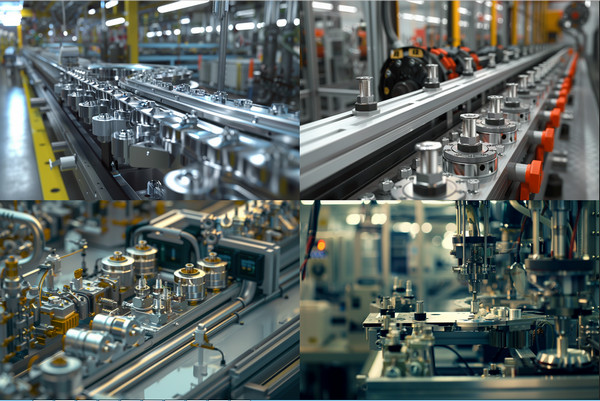News
News

With 15 years of experience in designing and manufacturing fully automated assembly equipment, we specialize in providing custom solutions for automated valve assembly lines. Our expertise lies in transforming manual labor into efficient, automated production processes, enhancing productivity, reducing labor costs, and improving overall business efficiency. In this article, we will delve into the core aspects of an automated valve assembly line, detailing its components, operation, and benefits.

The feeding system is crucial for supplying components to the assembly line. It typically includes hoppers, feeders, and conveyors. The system ensures a continuous and controlled flow of parts to the assembly stations, minimizing downtime and maintaining a steady production rate.
These are the workstations where various assembly tasks are performed. Each station is equipped with specialized tools and machinery designed to handle specific assembly operations such as inserting, screwing, sealing, and testing. The assembly stations are synchronized to ensure a smooth flow of components from one station to the next.
Robots and automated machinery are the backbone of an automated assembly line. They perform repetitive tasks with high precision and speed, significantly reducing the margin of error and increasing productivity. Robotic arms, for example, can handle delicate parts and perform complex assembly tasks that would be challenging for human workers.
Quality control is integrated into the assembly line to ensure that every valve meets the required standards. This includes automated inspection systems that use cameras and sensors to detect defects and measure dimensions. Any faulty components are automatically rejected or corrected, ensuring that only high-quality products reach the end of the line.
The control system oversees the entire assembly process, coordinating the actions of various machines and robots. Advanced software allows for real-time monitoring and adjustment, ensuring optimal performance and quick response to any issues that arise. This system also collects data for analysis and continuous improvement.
The operation of an automated valve assembly line involves several sequential steps:
Component Feeding: Components such as valve bodies, seals, and springs are loaded into the feeding system.
Initial Assembly: The primary assembly stations perform tasks like inserting seals and assembling the valve body.
Intermediate Inspection: After initial assembly, components are inspected for defects and accuracy.
Secondary Assembly: Additional parts are added, and more complex assembly tasks are performed.
Final Inspection: The assembled valves undergo a thorough quality check to ensure they meet specifications.
Packaging: Finished valves are packaged for shipment or further processing.
Implementing an automated valve assembly line offers several significant benefits:
Automation significantly increases the speed of production, allowing for higher output without compromising quality.
Automated systems reduce the need for manual labor, leading to lower labor costs and fewer human-related errors.
Automated quality control ensures that each valve meets stringent standards, resulting in a more reliable product.
Automated lines can be easily scaled to meet increasing demand, providing flexibility in production capacity.
Automation minimizes human involvement in potentially hazardous tasks, improving workplace safety.
In conclusion, an automated valve assembly line is a critical investment for companies looking to enhance efficiency, reduce costs, and maintain high product quality. Our extensive experience and expertise in designing and manufacturing these systems ensure that we provide the most effective solutions tailored to our clients' needs.
Copyright © Shenzhen City Huya Technology Co., Ltd. All Rights Reserved Sitemap | Powered by XiaoLiang